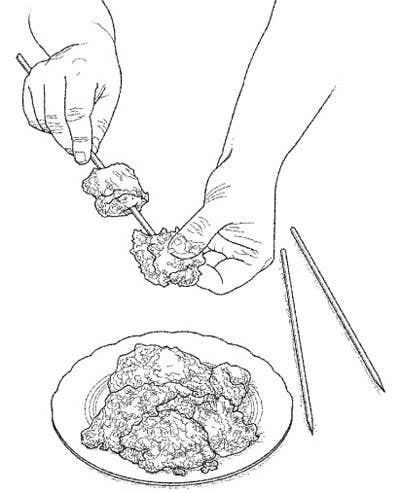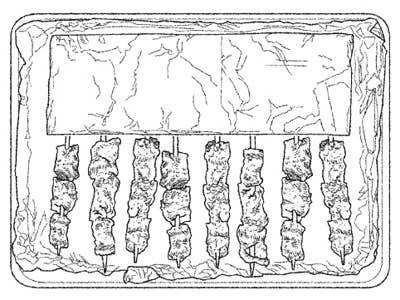
Satay Tips
Slicing
There are good reasons to slice the meat thin: It renders even chewy cuts, like beef sirloin and lamb shoulder, tender; it allows the marinade to penetrate the meat, thoroughly flavoring and tenderizing it; it creates more surface area which will become crisp and delicious when exposed to heat; and the satay will cook in just minutes. For easy slicing, place your meat in the freezer for 20 minutes to firm the flesh. Cut the meat across the grain and on a diagonal so that it's no thicker than 1/4″.
Skewering
Though metal skewers can be used, wood is more common. Soak wooden skewers for 30 minutes before cooking to prevent them from burning. If the meat is sliced very thin, you can weave the skewer in and out at 1/2″ intervals. In most cases, however, it's better to press the skewer straight through the center without breaching the surface of the meat. To do this, hold the sides of the meat tight and push the skewer 1″ into the meat, then stretch the meat down the length of the skewer (above).

Cooking
You can use a standard American charcoal grill or an electric one, but you'll get the tastiest results from a hibachi. With its shallow fire bed, it's the best kind of grill for satay because it places the meat as close to the fire as possible, ideally within 2″-3″. The high heat ensures an appealing exterior char. Charcoal- and wood-burning fires impart the best flavor. For indoor cooking, a broiler is the best alternative. For the recipes here, you can line a baking sheet with aluminum foil and cover the exposed ends of wooden skewers with foil too, to prevent burning (above). Cook the satays no more than 3″ from the broiler element to achieve that ideal combination of cooked center and charred exterior.
Keep Reading
Continue to Next Story










